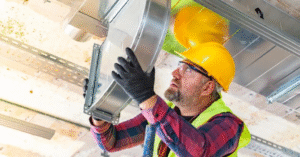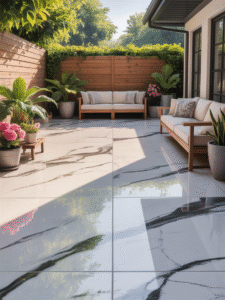Roof Longevity 101: Repairs, Maintenance, and Early Warning Signs
If you’ve ever had rainwater drizzle onto your couch during a storm, then you’re familiar with the way roofs have a knack for making themselves known when they’re not wanted. Roof issues seldom begin big. Instead, they tend to start small, a cracked tile, a little rust, a plugged gutter, and grow into costly headaches. The good news? With a little expertise and routine maintenance, you can extend the life of your roof and spare yourself the Sunday-night “why is it raining indoors?” moments.

Why Roof Longevity Matters
Your roof is essentially your home’s helmet. It’s your first line of defense against storms, heatwaves, and all that Australia’s climate has to offer. A good roof keeps you dry, but it also keeps your walls, ceilings, insulation, and even your foundation water-free from damage. Neglect it, and minor repairs can escalate into big structural problems.
Imagine this: you could replace some broken tiles for a couple hundred dollars. Replacing a water-damaged ceiling? That’s several thousand, and that’s even before you so much as lay a hand on the roof again.
The Main Causes of Roof Damage
Every roof has its enemies. Some are obvious, like a falling branch in a storm. Others are slow burners, causing damage bit by bit. Common culprits include:
- Weather exposure — Australia’s intense sun can warp materials, while storms can loosen flashing or lift shingles.
- Poor installation — A badly laid roof will age faster, no matter how much maintenance you do.
- Lack of upkeep — Blocked gutters, moss buildup, and debris create water traps that slowly eat away at materials.
- Pests — Birds, possums, and termites can all cause more damage than you’d think.
Early Warning Signs to Watch For
Roof damage doesn’t always announce itself loudly. In fact, most homeowners miss the first clues. Here’s what you should keep an eye on:
- Sagging or uneven areas — Could signal water damage or structural weakness.
- Stains on ceilings — Even faint watermarks mean water is getting in somewhere.
- Rust on metal roofing — Once rust starts, it can spread fast.
- Granules in gutters — If you’ve got asphalt shingles, those little gritty bits are a sign of surface wear.
- Light through the attic — If sunlight’s getting in, water can too.
Catch these early, and you’re looking at a repair bill. Miss them, and it might turn into a replacement bill.
How Often Should You Inspect Your Roof?
Once a year is the bare minimum for inspections. Twice is better, once before storm season, and once after. Melbourne Roofing professionals often recommend spring and autumn checks, as weather changes can reveal hidden issues.
If you’ve recently had high winds, hail, or heavy rain, it’s worth doing an extra check, even if everything seems fine. Small cracks or lifted flashing aren’t always visible from the ground.
Maintenance Tips That Actually Work
Some homeowners go years without touching their roof. Others are up there every weekend. The sweet spot is somewhere in between, enough care to prevent problems, but not so much that you’re causing unnecessary wear.
Here are some habits worth adopting:
- Clear gutters regularly — Blocked gutters force water back under your roofline.
- Trim overhanging branches — Stops leaves and twigs building up, and reduces storm damage risk.
- Remove moss and lichen — They trap moisture, which speeds up rot and corrosion.
- Check flashing and seals — Around chimneys, vents, and skylights, these are common leak points.
- Look after paint or coatings — Protective finishes slow down weather damage.
A weekend of light maintenance now can save you a month of repairs later.
Suburb-Specific Roofing Challenges
Roofing problems aren’t one-size-fits-all. Where you live shapes the kind of wear your roof gets.
For example, roof repair in Melbourne often deals with a unique mix of challenges, blazing summers, wet winters, and the occasional hailstorm. Tiles can crack from rapid temperature shifts, while metal roofs can suffer expansion stress.
Conversely, houses in Sydney’s beachside suburbs such as Manly must contend with salt spray ruining metal fittings. Inland towns might not have to contend with salt, but dust accumulation is a big problem for roof seals and gutters.
Even within the one city, there are variations. Inner suburbs with heritage houses may have slate roofs that require specialist servicing. Outer suburbs with modern estates tend to have lower-cost materials that aren’t as durable without maintenance.
Common DIY Roofing Mistakes
Plenty of homeowners think a ladder, a hammer, and a YouTube video are all they need. But roofing is one of those trades where a wrong move can cost more than hiring help in the first place.
Here are the most common pitfalls:
- Walking in the wrong spots — Some tiles and sheets can crack just from misplaced weight.
- Using the wrong sealant — Not all silicones and adhesives are weatherproof or suitable for roofing materials.
- Ignoring safety gear — Falls from roofs are a leading cause of DIY injuries.
- Covering, not fixing — Slapping a tarp over a leak is fine in an emergency, but it’s not a long-term solution.
When to Call in a Professional
Some repairs are well within a homeowner’s skill set. Cleaning gutters, clearing debris, or replacing a single cracked tile can be manageable if you’re comfortable and safe on a ladder.
But larger repairs, structural work, complete replacements, or leak detection, are best suited to experts. They have the equipment, supplies, and know-how to do the job right and make it stick. And more importantly, they can identify issues you may miss.
The Cost of Neglect
Forgetting to maintain the roof is like forgetting a toothache, it just gets worse. A small leak can rot the timber framing, destroy insulation, and make ideal breeding places for mould. Damage tends to spread far more widely than the roof itself, into ceilings, walls, and even flooring.
By the time you notice significant visible damage, the bill can be five to ten times more than it would have been if you had repaired it early. In severe cases, water damage can even make your house structurally unsafe.
Final Thoughts
Your roof is not always in need of attention, but it does require constant attention. Taking a few hours a year to inspect it and attend to it can add decades to its lifespan.
Whether Melbourne Roofing issues, coastal corrosion, or simply loose tiles, the rules are the same: catch problems early, keep the fundamentals, and don’t hesitate to call in the pros when the task is bigger than your ladder abilities.
Consider your roof the tyres of your car. You don’t even realize they’re there when they’re working, but when they’re not, all comes to a standstill. Treat them kind, and they’ll treat you kind.









Post Comment